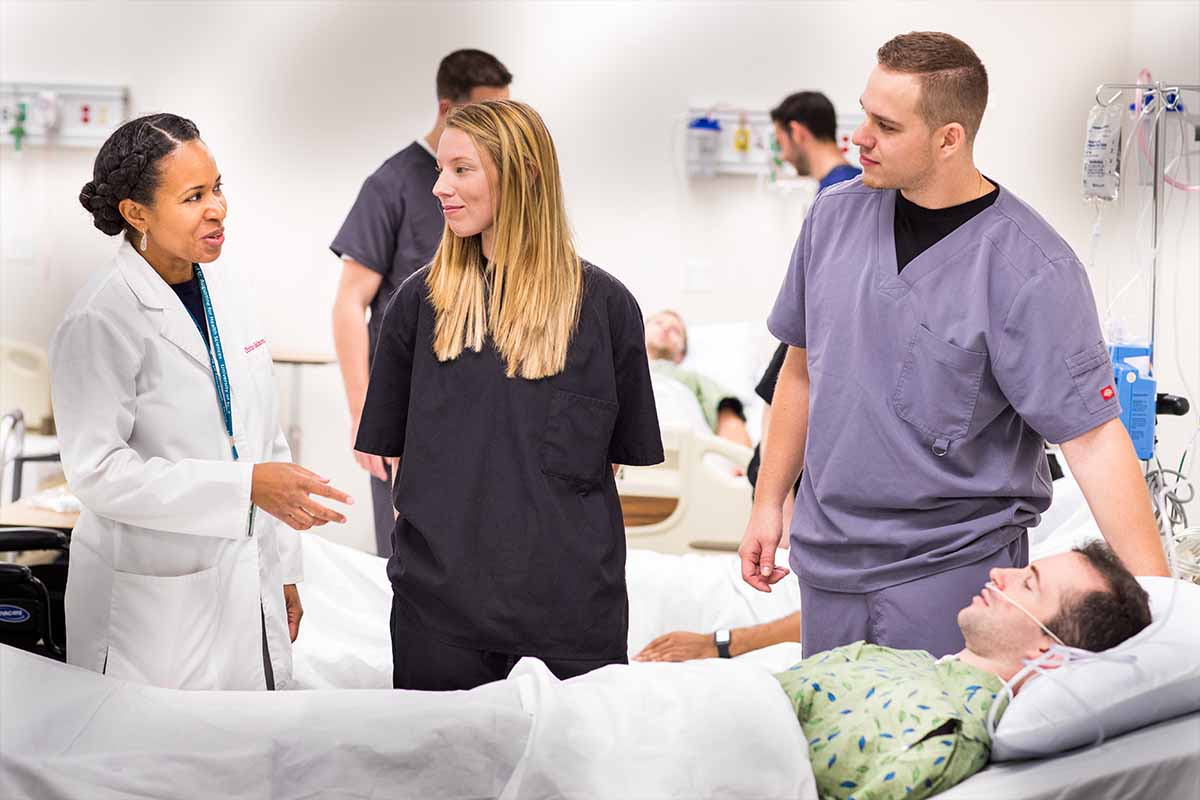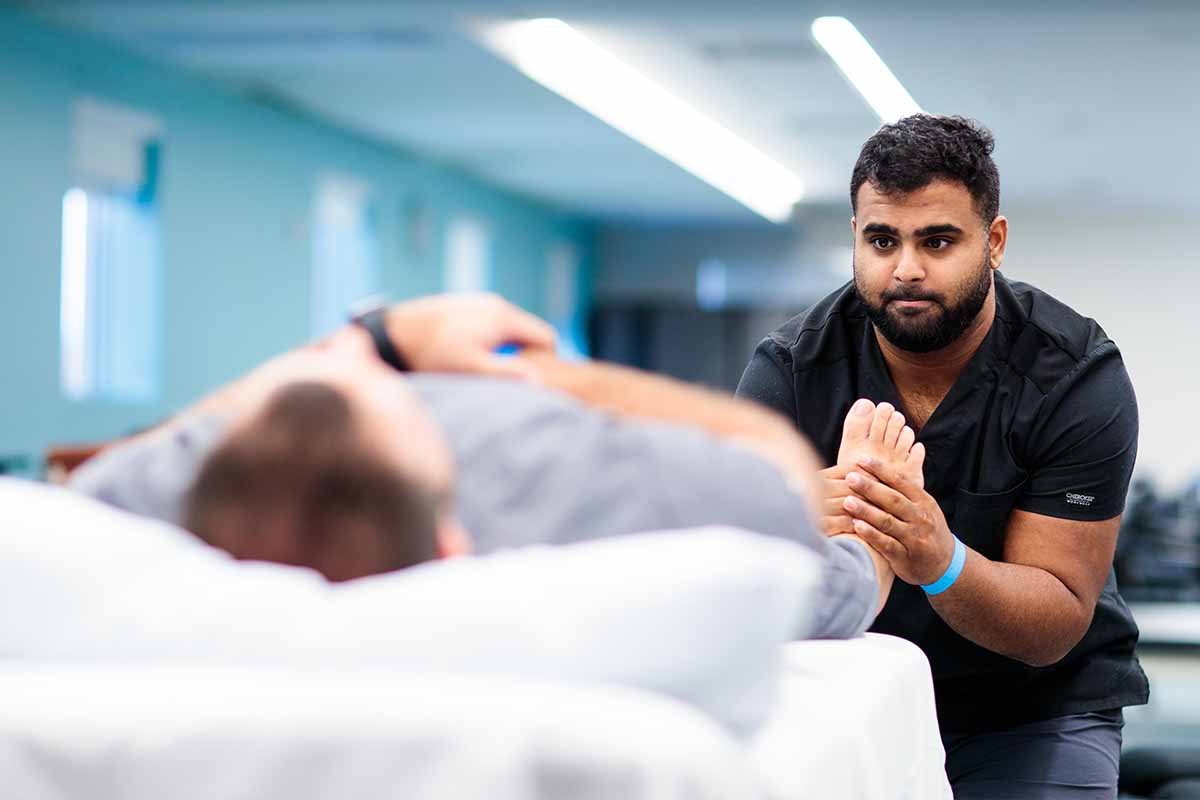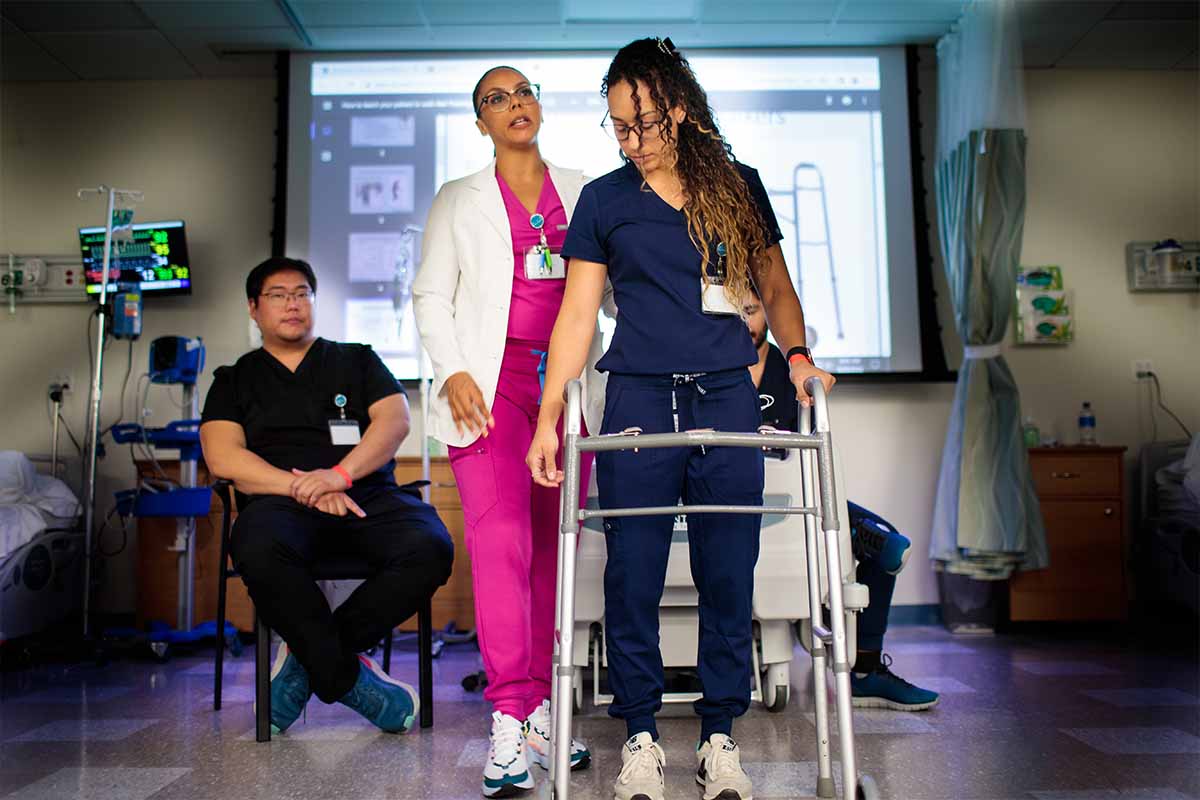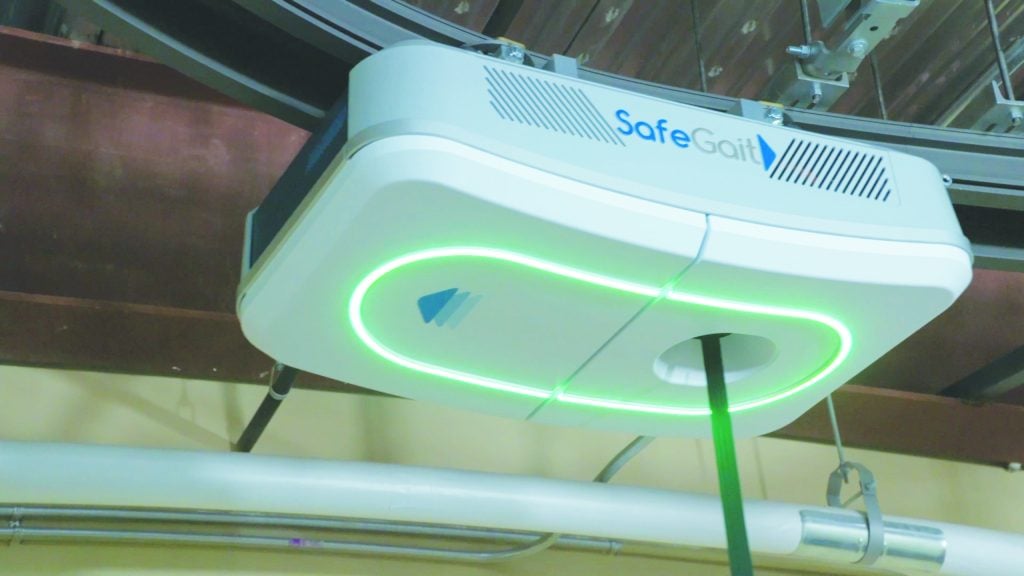

Five-year-old Lily* waits patiently as Dr. Liz Ardolino buckles her into a harness, which is attached by straps to a ceiling-mounted track. As Ardolino guides her through the motions, the little girl stands and moves around the track. “Faster!” she shouts gleefully, flapping her arms. “I’m flying!” Lily was born with spina bifida, a birth defect in which the spinal cord or its coverings don’t form completely, causing a variety of symptoms including muscle weakness and partial paralysis. She has never walked—until now.
It’s the result of the SafeGait 360° Balance and Mobility Trainer, a device that can be programmed to support up to half of a patient’s body weight, helping improve balance and mobility. Unlike earlier models, SafeGait 360° uses a rail system that allows users to maneuver around a track, increasing the space they can explore beyond the confines of a treadmill. The system can be used to help strengthen muscles and improve gait in people with spinal cord injuries, stroke-related disabilities, and other conditions without the risk of falling. Best of all, participant progress is tracked. Faculty and students can use the system’s patient management software to track and compare session and task data.
“Lily can’t sit up on her own without back support,” explains Ardolino, an assistant professor in the Doctor of Physical Therapy (DPT) program. “To be able to stand up with SafeGait 360° is a very freeing feeling for her.” Ardolino was instrumental in helping bring SafeGait 360° to the school’s Austin, Texas, campus last fall, making it one of the first higher education institutions in the country to install this innovative device. Together with her colleagues, she plans to use the system as a teaching tool for students, in clinical research, and, eventually, in the community to help improve patient care.
Bringing Coursework to Life
While lectures have their place in any course, many students learn best through hands-on experience. To help introduce them to the concept of body weight systems and the role they can play in physical therapy, the university now includes SafeGait 360° in several independent study courses, where students help evaluate and treat volunteers with neurological disorders.
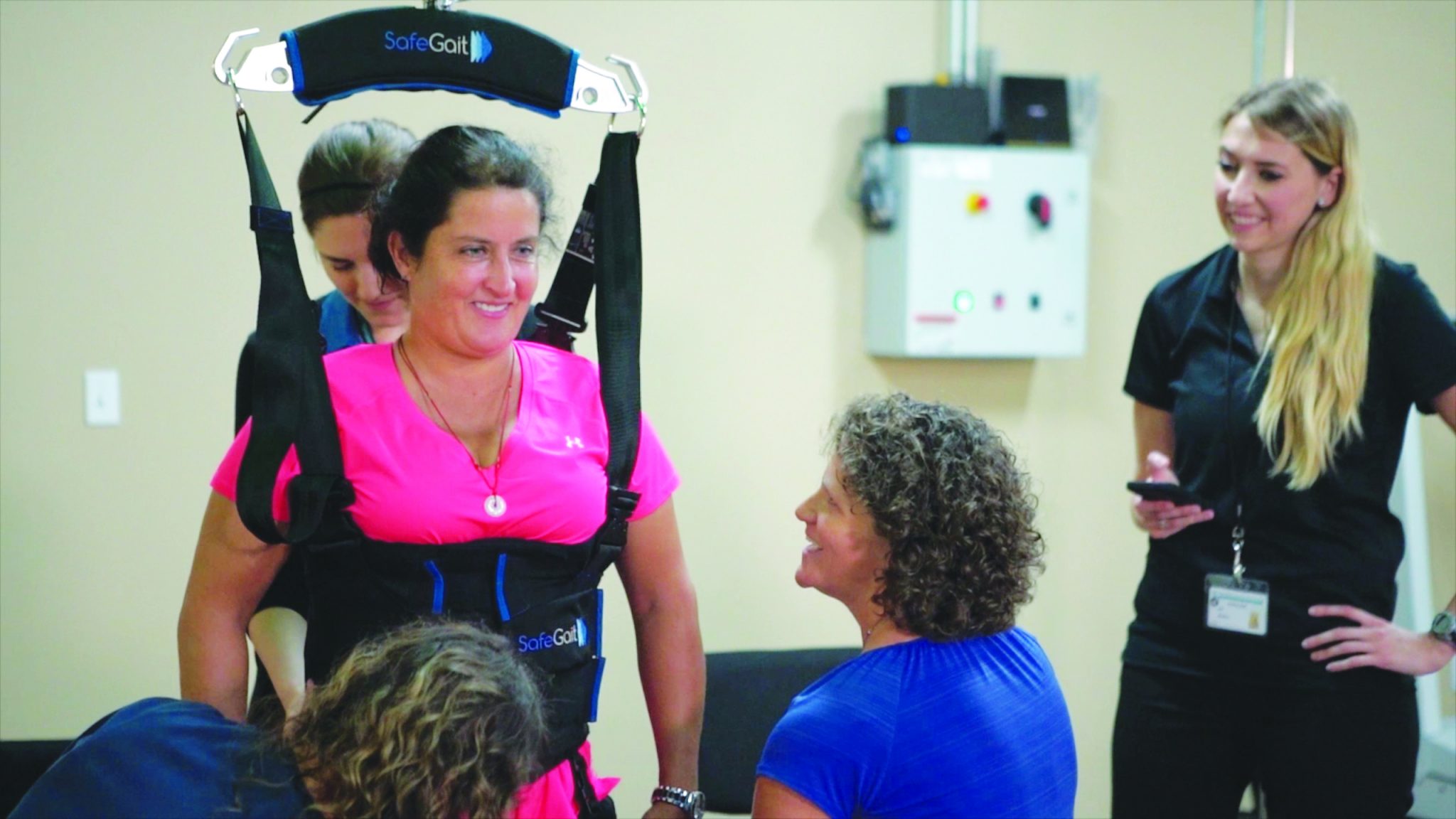

“My experience using SafeGait 360° was awesome, particularly because I truly feel that the professors saw us more as young colleagues,” says Dr. Adam Williams, a recent DPT graduate. “It also validated everything I’ve learned.”
Understanding how they can harness the power of new technology to increase patients’ mobility has also helped open new career paths to budding young therapists like Dr. Ashley Hall, another recent DPT graduate who participated in a seventh term independent study course with Ardolino. “I’d never considered working with the neurological population until I took my first neuroscience course,” she says. “SafeGait 360° allows us to work safely with participants with varying diagnoses. Applying our knowledge in hands-on practice has been a great learning experience.”
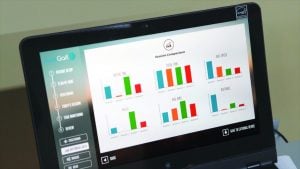

“We want to start with toddlers before they develop muscle contractures,” says Flores. “Body-weight-supported walking may help kids gain better control over their trunk and improve their posture. Hopefully, their quality of life may increase as well.”
“Body-weight-supported walking may help kids gain better control over their trunk and improve their posture. Hopefully, their quality of life may increase as well.”
An Innovative Research Tool
Flores is also working with Ardolino on a study that examines the feasibility of using SafeGait 360° to validate an outcome measure in children with spina bifida. A tool called the Pediatric Neuromuscular Recovery Scale currently measures recovery in children after spinal cord injury. Now, the professors want to know whether the scale can also assess neuromuscular capacity in kids with spina bifida.
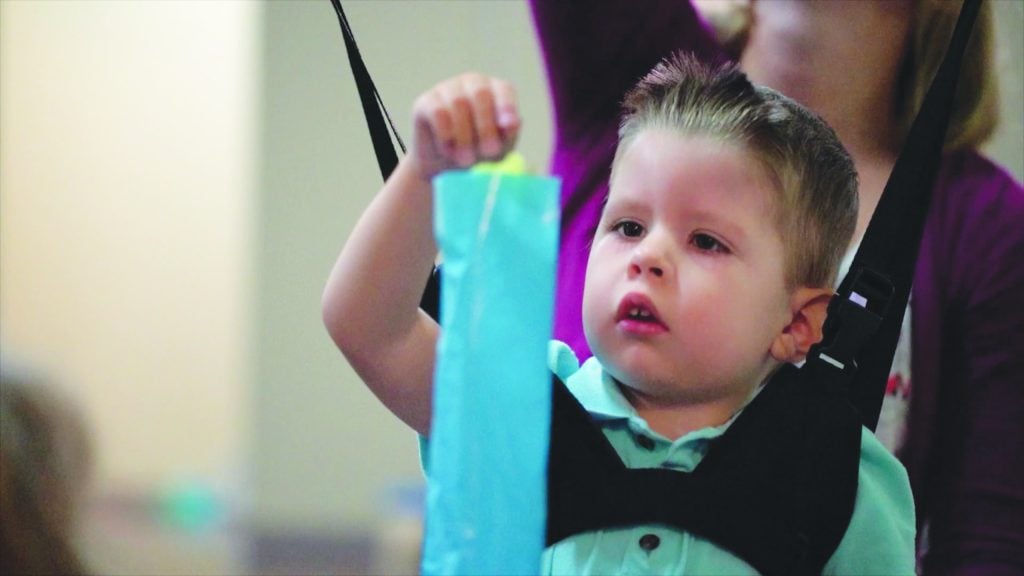

Over the course of two visits, 28 volunteers were asked to sit, reach, and perform various activities with and without SafeGait 360°. The device isn’t yet being used as a treatment for spina bifida stresses Ardolino, but to measure neuromuscular ability. “The goal,” she says, “is ultimately to use the SafeGait 360° as an intervention.” Her study will help lay the foundation for future research.
In the meantime, she and Flores are brainstorming creative ways to make the device more palatable to children with a variety of neurologic disorders, some of whom may associate it with medical equipment. In addition to showing the young participants videos and distracting them with toys, they’ve come up with another diversion: attaching kid-sized superhero capes to the SafeGait 360° harness. It’s a clever approach that makes testing more fun for children and adults alike.
Beyond Campus
Less than six months since the university installed SafeGait 360°, both instructors and students say it’s adding a new dimension to their work—and showing even more promise for future opportunities within the community. In collaboration with faculty and students on the San Marcos campus, Ardolino hopes to begin using the device to validate the adult version of the Neuromuscular Recovery Scale (NRS) as a measure of neuromuscular capability in adults with traumatic brain injury (TBI). Set to begin next winter, this project also will allow investigators on the Austin campus to test SafeGait 360° with TBI patients from local inpatient rehabilitation facilities.
There are also plans to collaborate with SafeGait’s manufacturer to develop a continuing education program for physical therapists. “The company currently offers training to use the device,” says Ardolino. “But it doesn’t provide the theories behind the ways physical therapists might use it in practice.” Through continuing education, Ardolino and her colleagues plan to introduce body weight systems to other clinicians in the Austin area.
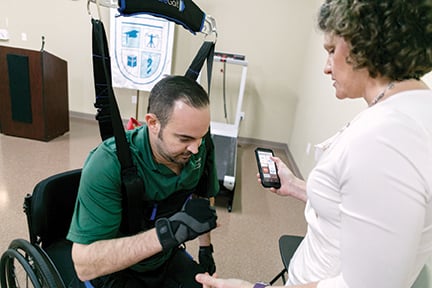

Likewise, with assistance from students, faculty members aim to bring their expertise in SafeGait 360° and other body weight systems to patients in the Austin community through a pro bono clinic. Still in the planning stages, the clinic will use SafeGait 360° to offer this approach to people with neurological injuries, as well as the geriatric population, patients who have been discharged from traditional physical therapy treatments, and those who may not have the health insurance benefits to cover extensive therapeutic care.
“We’re really excited about helping to create services that use body weight systems,” says Hall, who is assisting with this early phase of the clinic’s development. “This is something that has the potential to benefit many people in the community in such a meaningful way.”
*Name has been changed to protect individuals’ privacy.






